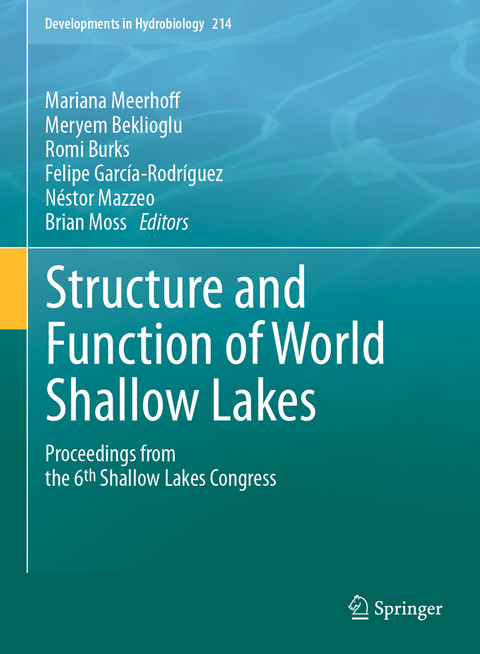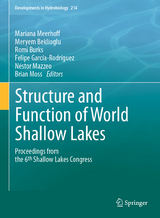Structure and Function of World Shallow Lakes
Proceedings from the 6th Shallow Lakes Congress
Seiten
This book focuses on a selection of articles presented during the 6th International Shallow Lakes Congress, held in Punta del Este, Uruguay, in November 2008. The expansion of research on shallow lakes around the world poses questions on the general validity of the theoretical framework developed in cool and cold temperate shallow lakes.
This book focuses on a selection of articles presented during the 6th International Shallow Lakes Congress, held in Punta del Este, Uruguay, in November 2008. Both the congress and the articles included in this volume raise a number of key issues. The expansion of research on shallow lakes around the world poses questions on the general validity of the theoretical framework developed in cool and cold temperate shallow lakes. In particular, comparisons along latitudinal gradients in Europe and America have shown that the functioning of lakes differs with the predominant climate and with their sensitivity to water level changes. This may have profound practical consequences for lake management and rehabilitation strategies. The results of controlled experiments and space-for-time (including latitudinal gradient) studies suggest that eutrophication symptoms likely become worse with an increase in mean temperature caused by climate warming. Consequently, the vulnerability of these ecosystems to external impacts such as changes in water level, arrival or introduction of exotic species, increase in nutrient loading and agrochemicals, will likely increase. It thus seems clear that nutrient inputs should be lowered to a much greater extent than previously thought in order to keep lakes’ diversity and conservation value, as well as to increase the chances of maintaining the still pristine lakes in a clear-water, high-biodiversity state.
This book focuses on a selection of articles presented during the 6th International Shallow Lakes Congress, held in Punta del Este, Uruguay, in November 2008. Both the congress and the articles included in this volume raise a number of key issues. The expansion of research on shallow lakes around the world poses questions on the general validity of the theoretical framework developed in cool and cold temperate shallow lakes. In particular, comparisons along latitudinal gradients in Europe and America have shown that the functioning of lakes differs with the predominant climate and with their sensitivity to water level changes. This may have profound practical consequences for lake management and rehabilitation strategies. The results of controlled experiments and space-for-time (including latitudinal gradient) studies suggest that eutrophication symptoms likely become worse with an increase in mean temperature caused by climate warming. Consequently, the vulnerability of these ecosystems to external impacts such as changes in water level, arrival or introduction of exotic species, increase in nutrient loading and agrochemicals, will likely increase. It thus seems clear that nutrient inputs should be lowered to a much greater extent than previously thought in order to keep lakes’ diversity and conservation value, as well as to increase the chances of maintaining the still pristine lakes in a clear-water, high-biodiversity state.
| Reihe/Serie | Developments in Hydrobiology ; 214 |
|---|---|
| Zusatzinfo | VI, 336 p. |
| Verlagsort | Dordrecht |
| Sprache | englisch |
| Maße | 193 x 260 mm |
| Themenwelt | Naturwissenschaften ► Biologie ► Limnologie / Meeresbiologie |
| Naturwissenschaften ► Biologie ► Ökologie / Naturschutz | |
| ISBN-10 | 94-007-0260-4 / 9400702604 |
| ISBN-13 | 978-94-007-0260-8 / 9789400702608 |
| Zustand | Neuware |
| Haben Sie eine Frage zum Produkt? |
Mehr entdecken
aus dem Bereich
aus dem Bereich
Naturerfahrungen zwischen Quelle, See und Wildfluss
Buch | Hardcover (2024)
Verlag Anton Pustet Salzburg
CHF 41,95
Buch | Hardcover (2022)
National Geographic Deutschland (Verlag)
CHF 55,95




